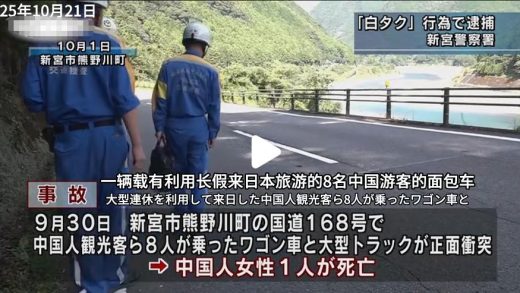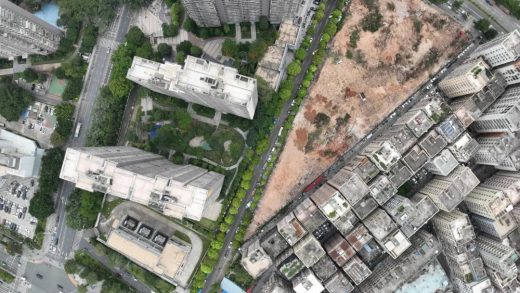Positive Comments: The Withdrawal of State-owned Capital is a Crucial Turning Point in Optimizing the Venture Capital Ecosystem, Expected to Activate Market Innovation Vitality
The “state-owned capital-led” model in China’s venture capital market has played a key role in concentrating resources to support hard technology and promote industrial upgrading in specific historical stages. However, as revealed in the news, when government funds have long accounted for more than 75% of the capital contribution, and even caused market distortion through the cycle of “guidance funds → capacity investment promotion → overcapacity”, the withdrawal of state-owned capital is no longer a question of “whether it will happen” but “how to withdraw in an orderly manner”. The positive significance of this turning point for the venture capital industry is mainly reflected in the following three aspects:
I. Breaking the “Policy-driven” Involution and Releasing Market Competition Vitality
In the past decade, local governments have intervened in the venture capital market on a large scale through mother funds, guidance funds and other tools, essentially continuing the traditional investment promotion logic of “competing for policies, subsidies and land”. Under this model, the goals of state-owned investment institutions are highly bound with those of local governments – they need to meet the reinvestment targets and boost GDP through industrial implementation, which ultimately leads to a large amount of funds flowing into “policy-friendly” sectors such as photovoltaics and new energy, resulting in redundant construction and overcapacity (as mentioned in the news, the operating rate of photovoltaic modules is less than 60% and there is a serious backlog in warehouses). More importantly, this “convergent industrial logic” has squeezed the living space of private GPs: in 2022, social capital systematically withdrew, and more than 80% of non-top-tier institutions could not obtain support from state-owned mother funds, and the market innovation vitality was replaced by “policy orientation”.
After the withdrawal of state-owned capital, funds will be more inclined to flow to institutions with real market profitability (whether state-owned or private), rather than only relying on policy endorsements. This will promote the venture capital industry to shift from “policy-driven” to “value-driven”: if private GPs can prove their investment capabilities in the early-stage hard technology field (such as accurately capturing technological trends and building a post-investment empowerment network), they will regain the attention of social capital; state-owned investment institutions need to return from the role of “athlete” to “referee”, and support innovation through improving the fault-tolerant mechanism, opening up industrial scenarios and other institutional supplies, rather than directly participating in investment. This transformation will effectively reduce the phenomena of “migratory enterprises” and “bad money driving out good money”, and let market competition return to the essence of “technological strength” and “commercial value”.
II. Promoting the Concentration of Resources to “Effective Investment” and Improving the Efficiency of Capital Use
As mentioned in the news, state-owned sub – funds often miss the investment window due to the lengthy approval process (such as 11 approval procedures for angel – round projects) and conservative risk preferences (“unable to accept innovative models that are not understood”), resulting in low efficiency of capital use. More seriously, some state-owned funds are trapped in the vicious cycle of “unable to invest and unable to withdraw” due to difficulties in withdrawal (from 2020 to the first half of 2023, the proportion of equity repurchase disputes involving government guidance funds exceeded 80%), and even face accountability due to non – compliance with reinvestment targets and project losses, further exacerbating the idleness of funds.
The essence of the withdrawal of state-owned capital is “eliminating inefficiency” – letting unprofitable state-owned sub – funds withdraw from the market and concentrating funds in the hands of institutions with real investment capabilities. This process will force state-owned mother funds to optimize the screening mechanism: no longer relying only on the “endorsement of state-owned GPs”, but paying more attention to the historical performance, industry focus and withdrawal ability of sub – funds; at the same time, the entry of social capital (such as insurance funds and pensions) will fill the gap of “patient capital” and provide a more sustainable source of funds for early – stage hard technology investment. For example, if state-owned mother funds shift from “direct investment” to “guiding social capital to participate” and magnify the capital efficiency through the market – based leverage effect, it will be more in line with the policy intention of “injecting private economy in a market – oriented way” than relying solely on government funds.
III. Reconstructing the Cooperative Relationship between “State – owned Capital and Private Capital” and Cultivating a Healthy Capital Ecosystem
The current contradiction in the venture capital market is essentially the conflict between “government – capital dominance” and “market economic laws”. The withdrawal of state-owned capital does not deny the role of government funds, but promotes them to shift from “capital suppliers” to “institutional suppliers”. The policy signals mentioned in the news (such as the “Guidelines for the Layout Planning and Investment Direction of Government Investment Funds” issued by the National Development and Reform Commission and the proposal of “comprehensive clearance of urban investment platforms” by the Political Bureau of the Central Committee) have released a clear orientation: in the future, the core function of state-owned capital should be to improve the fault – tolerant mechanism (such as expanding the acceptable loss range), open up industrial scenarios (such as promoting technological cooperation between state – owned enterprises and private enterprises), and standardize the market order (such as cracking down on industry ills such as “investment managers taking kickbacks”), rather than directly participating in specific project investments.
This role transformation will create new space for the cooperation between “state – owned capital and private capital”: state – owned capital can take over the withdrawal needs of market – oriented funds through S funds (secondary share transfer funds) to provide liquidity support for private capital; private GPs can rely on their advantages in early – stage project screening and market – based operation to cooperate with state – owned mother funds to set up special funds, focusing on the “bottleneck” areas of hard technology. For example, in long – cycle and high – risk sectors such as semiconductor materials and quantum computing, state – owned capital can share risks with private institutions through the “follow – up investment + risk compensation” model, which not only retains the guiding role of government funds but also avoids “overstepping” to interfere with the market.
Negative Comments: Be Vigilant of the Risks of “Discontinuity in Hard Technology Investment” and “Absence of Long – term Capital” during the Withdrawal of State – owned Capital
Although the withdrawal of state – owned capital is a necessary step to optimize the market ecosystem, its potential risks cannot be ignored. If the rhythm of the withdrawal gets out of control or the supporting policies are not followed up in time, it may cause two – fold negative impacts:
I. Early – stage Hard Technology Investment May Shrink due to “Capital Discontinuity”
The typical characteristics of hard technology investment are “long cycle (7 – 10 years for returns), high mortality rate (the success rate of early – stage projects is less than 10%), and high technological threshold (requiring in – depth industrial knowledge)”. In the past decade, state – owned capital has become the main source of funds for early – stage hard technology investment through guidance funds, mother funds and other tools – by the end of 2023, the target scale of government guidance funds reached 12.19 trillion yuan, covering the financing needs of seed – stage and start – up technology enterprises. If state – owned capital shrinks on a large scale and social capital (such as insurance funds and pensions) cannot fill the gap in time due to characteristics such as “short – cycle assessment” and “risk aversion”, early – stage hard technology investment may face the risk of “discontinuity”.
For example, as mentioned in the news, “most market – oriented investment institutions are not capable of participating in early – stage financing”, which is because the nature of the funds of market – oriented institutions (such as the average duration of RMB funds is 5 – 7 years) does not match the hard technology investment cycle. If there is a lack of “patient capital” supplementation after the withdrawal of state – owned capital (such as extending the lock – in period of insurance funds investing in equity funds and allowing pensions to increase the equity allocation ratio), it may lead to difficulties in financing early – stage projects in “bottleneck” areas such as semiconductor equipment and biomedicine, and delay the process of technological breakthroughs.
II. Regional Industrial Upgrading May Stall due to the “Ineffectiveness of Policy Tools”
One of the core means for local governments to promote industrial upgrading at present is to “attract investment through investment” through guidance funds – driving the supporting industries, employment and tax revenue through the implementation of investment projects. If the withdrawal of state – owned capital leads to the shrinkage of guidance funds, local governments may lose an important industrial investment promotion tool, especially for less – developed regions in the central and western regions where the private economy is less developed, and their ability to attract high – quality projects will be further weakened. The news mentioned that “manufacturing investment in Wenzhou decreased by 3.8% in the first half of the year” and “private investment has had negative growth for three consecutive quarters”, which reflects the impact of the shrinkage of private capital on the regional economy.
In addition, the withdrawal of state – owned capital may exacerbate the “Matthew effect”: top – tier market – oriented institutions (such as Sequoia and Hillhouse) are more likely to obtain support from social capital due to their brand and historical performance; while small and medium – sized institutions (especially local GPs focusing on regional characteristic industries) may be forced to withdraw from the market due to difficulties in fundraising, resulting in a decline in regional industrial service capabilities. For example, if a local GP in a central province that originally focused on investing in local new material enterprises cannot raise funds due to the shrinkage of state – owned mother funds, the early – stage projects of the new material industry in this province will lose key financial support, and the industrial chain upgrading may be hindered.
III. The Challenge of Balancing “De – bureaucratization” and “Risk Prevention”
The key to the withdrawal of state – owned capital is to promote state – owned investment institutions to shift from “administrative operation” to “market – oriented operation”, but there may be risks of “regulatory vacuum” or “over – marketization” in this process. For example, as mentioned in the news, “it is an industry ills that investment managers take kickbacks through financial advisors on a large scale”. If state – owned institutions relax internal risk control during the withdrawal process (such as reducing the approval process), it may lead to an intensification of corruption problems; while if they over – strengthen supervision to prevent risks (such as extending the approval cycle), they may return to the old path of “low efficiency”. In addition, some local governments may be eager to recover the investment of guidance funds due to the pressure of “clearing urban investment platforms” and “exiting platform companies”, resulting in the early liquidation of sub – funds, which further impacts the market stability.
Suggestions for Entrepreneurs: Seize the Opportunities of the Withdrawal of State – owned Capital and Build the Core Competence of “Specialization + Policy Adaptation”
Facing the market reconstruction brought about by the withdrawal of state – owned capital, entrepreneurs need to adjust their strategies from the following four aspects to seize the opportunities:
I. Focus on “Real – demand” Hard Technology and Strengthen the Ability of Technology Commercialization
After the withdrawal of state – owned capital, funds will be more inclined to flow to projects that “can make money”, rather than “migratory enterprises” that only rely on policy subsidies. Entrepreneurs need to focus on two types of opportunities: one is the core technologies to solve “bottleneck” problems (such as semiconductor materials and industrial software), and such projects may still receive special support from state – owned mother funds; the other is the innovation with a clear commercialization path (such as AI + manufacturing and new energy storage), which needs to prove the market value of the technology to investors through the way of “small – scale verification – large – scale replication”. For example, a semiconductor equipment start – up company achieved million – level revenue in the A – round by providing customized equipment for leading wafer factories, and successfully attracted investment from market – oriented institutions. This model is worth learning from.
II. Optimize the Financing Structure and Actively Connect with Diversified Sources of Funds
Facing the dual pressures of the “cut – off” of social capital and the increase in the fundraising threshold of state – owned capital, entrepreneurs need to broaden their financing channels:
– Pay attention to S funds and M&A exits: If early – stage funds face withdrawal pressure, they can transfer old shares through S funds to make room for subsequent financing;
– Connect with industrial capital: Cooperate with leading enterprises in the industrial chain (such as Huawei Hubble and Xiaomi Industrial Investment), and obtain technological endorsements and order support through strategic investment;
– Utilize policy tools: Actively apply for special support such as the National SME Development Fund and the Innovation Fund for Technology – based SMEs to reduce the dependence on a single source of funds.
III. Strengthen the Ability of Regional Policy Adaptation and Avoid the Trap of “Involution – style Investment Promotion”
The investment promotion model of local governments “competing for subsidies” is not sustainable. Entrepreneurs need to pay more attention to “industrial support” and “long – term policy stability”:
– Evaluate the regional industrial foundation: Give priority to choosing industrial clusters that match their own technological directions (such as the Yangtze River Delta for new energy and the Beijing – Tianjin – Hebei region for semiconductors), and use local industrial chain resources to reduce costs;
– Pay attention to the “soft environment” of policies: Focus on examining the industrial service capabilities of local governments (such as the efficiency of talent settlement and tax incentives implementation), the fault – tolerant mechanism (such as the tolerance for early – stage losses), rather than simply comparing the subsidy amounts;
– Participate in regional innovation alliances: Join the industrial innovation alliances led by local governments, and improve the “adaptability” of projects in state – owned mother funds through cooperation with universities and research institutions.
IV. Improve the Awareness of Compliance and Risk Control to Cope with the Changes in the Regulatory Environment
With the withdrawal of state – owned capital and the tightening of supervision, entrepreneurs need to strengthen internal compliance management:
– Standardize the financial and equity structure: Avoid legal disputes caused by problems such as “betting agreements” and “equity proxy holding” (such as the equity repurchase disputes of government guidance funds mentioned in the news);
– Pay attention to the special requirements of state – owned funds: If accepting state – owned investment, entrepreneurs need to understand in advance the reinvestment targets, exit deadlines and other terms to avoid fund recovery due to non – compliance;
– Establish a transparent information disclosure mechanism: Regularly report technological progress and financial status to investors to reduce the trust cost caused by information asymmetry.
Conclusion
The withdrawal of state – owned capital is not the “winter” of the venture capital industry, but a “turning point” in the reconstruction of the market ecosystem. By promoting state – owned capital to shift from “capital supplier” to “institutional supplier”, stimulating the vitality of social capital, and cultivating professional investment institutions, China’s venture capital market is expected to achieve a healthy pattern of “hard technology not being cold and innovation flowing continuously”. For entrepreneurs, the key is to seize this opportunity, take technological value as the core and market – oriented capabilities as the support, and build irreplaceable competitiveness in the wave of resource reallocation.
- Startup Commentary”Building LLMs: The Knowledge Graph Foundation Every AI Project Needs”
- Startup Commentary”The 17th Year of Tmall Double 11 and the New Map Rewritten by AI”
- Startup Commentary”How to Prepare Your Data for Artificial Intelligence”
- Startup Commentary”Small and Medium-sized Banks: “Cutting the Tail” in Loan Assistance”
- Startup Commentary”The Six AI Giants on Stage: AGI Is No Longer a “Future” Thing”





